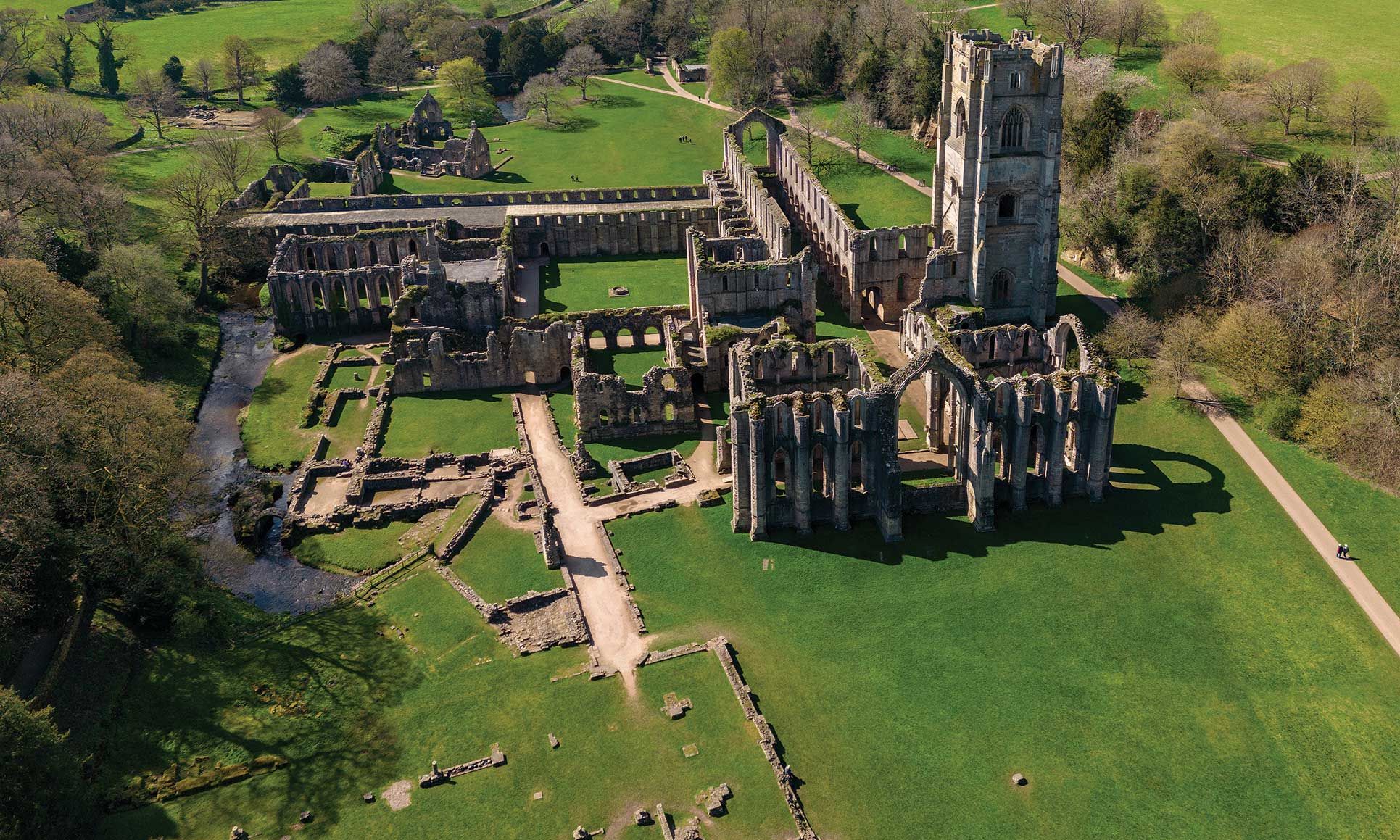Secular pilgrimage: hundreds of thousands of visitors each year flock to the spectacular ruins of Fountains Abbey Photo © Steve Allen
A visit to the ruins of Fountains Abbey in Yorkshire prompted me to think about that fascinating moment in history when a building once seen as old-fashioned or unworthy of preservation becomes valued again. What do we forget that we disliked about a building, or what it represented, and what do we choose to remember?
Take the buildings of ancient Rome. After the fall of the Roman Empire few cared for even the greatest imperial palaces. Huts and farmsteads were built within them, almost as physical manifestations of people’s contempt for what such palaces once represented. But time passed, and eventually societies across Europe wanted not only to preserve ancient Rome, but recreate it.
In Britain, the closest equivalent are the ruins of our former monasteries and convents. Until the 1530s, many monastic buildings rivalled our greatest cathedrals, and the monks and nuns who built them—in part to preserve the memory of the dead—took care to situate them in beautiful surroundings.
Annihilation by another name
For about 200 years, any stone remains that could not be demolished or recycled were left, unwanted shipwrecks in the landscape. Again, smaller buildings grew within them. For a post-Reformation society in which there were few greater dangers than Catholicism and its attendant “superstitions” (including religious art), we can see why people might have viewed former monasteries with indifference, even contempt.
Gradually, attitudes began to change. The association between building and despised former use grew weaker. We can see this most clearly in the later 18th-century writing of William Gilpin, the cleric and amateur artist who popularised the term “picturesque”. Gilpin was drawn to monastic ruins such as Tintern Abbey because of the beauty of their location and architecture, but as a diligent Protestant he was wary of admiring such “nurseries of superstition, bigotry and ignorance”.
Gilpin’s solution was to emphasise his desire to see monasteries as ruins. To enhance their “picturesque beauty”, he wrote, “we must use the mallet… we must beat down one half of it, deface the other, and throw the mutilated members around in heaps”. Then could we view them “not only with a picturesque eye, but with moral and religious satisfaction”.
Like Gilpin, I find such ruins places of wonder, a best-of-both-worlds blend of building and nature. I am glad they helped inspire the romanticism of literary and artistic greats like William Wordsworth and J.M.W. Turner, and perhaps even—in their “sublimity”—helped people find a spiritual connection between God and the landscape.
But the more I discover about the violence and destruction that accompanied the end of English monastic life in the 1530s (which centuries of Anglican teaching has glossed over) the less inclined I am to see the resultant ruins with any of Gilpin’s moral or religious satisfaction. Instead, I observe that sites like Fountains Abbey are still places of pilgrimage today, visited by hundreds of thousands a year, each signalling a desire to preserve. We are choosing to remember the monks and nuns who built them, and perhaps that is their final victory.

